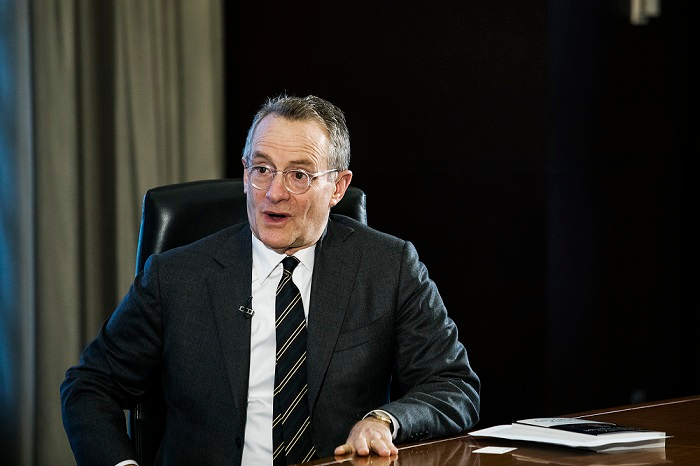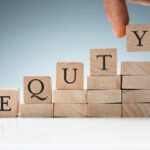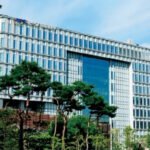
Investor exuberance over artificial intelligence has driven equity prices beyond their intrinsic values, heightening market volatility. Yet it remains uncertain whether such optimism can be deemed “irrational,” said Howard Marks, co-founder and co-chairman of Oaktree Capital Management.
“I think it’s clear today that we have exuberance,” he said during a CIO roundtable discussion in Seoul hosted by The Korea Economic Daily on Nov. 7. “Price is now above intinsic value. I think we can all agree that most assets are expsnviely priced.”
The S&P 500 index has soared 105% over the past three years to hit a record high in October. The Nasdaq index also rallied to its hishest-ever level last month.
“What elese rose 105%? Did earnings go up 105%, or did intrinsic value go up?” he asked. We have radical fluctuations in price instead … so obviously price changes much more radically than does intrinsic value.”
The Wall Street guru cited the price to earnings ratios of S&P 500 stocks, currently at about 24 on average, are higher than 16%, the historical average since the end of World War II.
However, the figure is below its all-time high of 32 in 2000 during the height of dot-com euphoria, which he said was a very isolated instance and very short-lived.
Asked whether he sees signs of “irrational exuberance,” a term coined by former Federal Reserve Chairman Alan Greenspan to warn of a dot-com bubble, Marks struck a cautious tone, saying it is difficult to make such a judgment.
“You can’t quantify the future. You can quantify the present. You can’t quantify prices,” based on future expectations hard to quantify,” he warned.
‘MAGNIFICENT SEVEN’
The 79-year-old Wall Street legend shared the view that AI will change the world, adding that “Magnificant Seven” companies are the greatest he has ever seen since entering the investment market in 1969.
Magnificent Seven includes Apple, Microsoft, Google, Amazon, Nvidia, Meta and Tesla. They dominate the S&P 500 index and capital expenditures in the US.
Marks said their valuations, currently in the 30s on avearge, seem moderate, adding: “Thirty seemed high, but not crazy.”
However, he cautioned that high-quality assets may be more expensive in the US than other regions.

DEEPENING GLOBAL, MARKET UNCERTAINTY
At the forum, leaders from major global asset management firms argeed that volatility will intensify, making selective investments increasingly critical.
Dan Quayle, chariman of Cerberus Global Investment, warned that US President Donald Trump’s second term is fueling greater political and market instability.
He said the second Trump administration is far more organized than the frist and loyalty-driven. The president’s rhetoric and strategy are eroding the financial market’s predictability.
Theodore Koenig, chairman of Monroe Capital, noted tha trade protection, deregulation, immigration crackdown and expansionary fiscal policy in the US are reshaping the economic order, adding: “We haven’t seen this in 40 years and it’s important to understand what is happening.”
PRIVATE CREDIT MARKET
Koenig expects the US Federal Reserve to cut interest rates by 100 basis points to about 3%, “where I think will bottom out.”
The global private credit industry is expected to grow to $5 trillion in five years from the current $2 trillion, driven by a broader base of demand, he said.
Amid weakening consumption and economic slowdown, sectors such as software technology, advanced manufacturing, logistics, data and defense continue to outperform.
Stephan Caron, managing director and head of European Middle Market Private Debt at BlackRock, noted that Europe will be a huge beneficiary of the private credit market growth as the US-oriented investors are seeking to diversify their allocations.
“Today in Europe private debt funds have a 50% market share on average and that varies by country. In the UK, it’s higher. In Germany, private debt funds have a market share close to 70%, compared to 16% in 2016.
“We’re seeing that trend develop across Europe as well.”

Further, robust earnings at mid-market companies in the region, amounting to high single digits in terms of earnings before interest, tax, deprication and amortization, underpins the growth of the region’s private debt market, Caron said.
PRIVATE EQUITY MARKET IN ASIA
Touching on the private equity industry, he highlighted the continued growth of Europe’s buyout market. The distributions in-paid capital in the region are closer to 25%, higher than 15% in US.
“You can see that the underlying fundamentals are actually improving in Europe overall and that is going to drive a pickup in M&A volumes as the bid-ask spread is reducing cost of debt,” he added.
In Asia, Vincent Hsu, partner at StepStone Group, said that signs of recovery are emerging in the region. StepStone has put $14 billion into Asia’s private equity market.
By country, he is optimistic about India, Japan and South Korea.
“In India, there’s more exit opportunities … Japan is a bright spot for Asian private equity. There are a lot of tailwinds because of the improvement in corporate governance as well as… more activist shareholders.”
“In Korea, typical playbook here for private equity has generally been the chaebol carve-outs. There are big hopes that the value-up program or reforms can actually mirror what you saw in Japan.”
Chaebol is a Korean term referring to large, family-run conglomerates established in the early to mid-1900s.
However, Hsu cautioned about China, saying its private equity market in China is undergoing a major correction due to an unpredictable regulatory regime and weakening investor sentiment.















